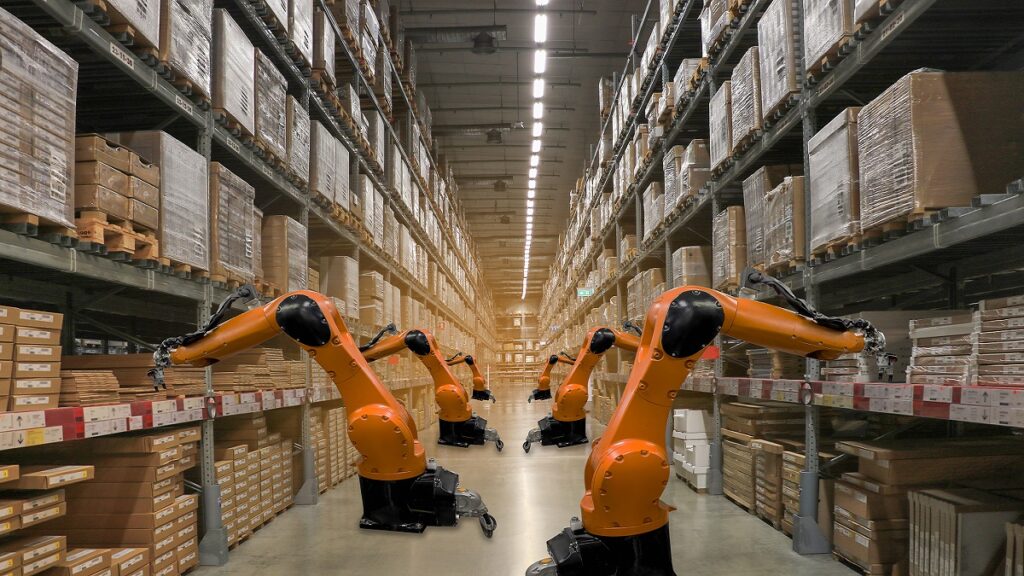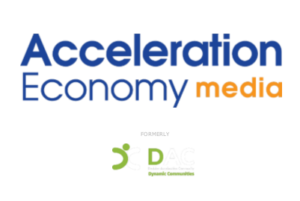Managing Supply Chains with AI and Predictive Maintenance

The efficiency equation: how the supply chain industry can benefit from artificial intelligence and predictive analytics.
AI driven predictive analytics for supply chain management
If it’s not broken, don’t fix it.
The adage is generally accurate — businesses may create more problems than they solve by restructuring processes or replacing policies that are working as intended.
The exception? Predictive maintenance. With the right combination of strategies and software tools, businesses can pinpoint potential problems before they happen and take action to reduce their risk.
This ahead-of-the-curve approach is well-suited to help organizations manage rapidly changing supply chain environments, and it becomes even more effective when paired with artificial intelligence (AI). Supply chain leaders that leverage predictive analytics and AI technology may find themselves making more informed decisions and improving their operational efficiency.
The evolution of supply chain management
Supply chains began as straightforward connections between suppliers and manufacturers. Economies of scale extended and expanded these supply chains, with companies opting for global connections with one or two larger global supply chain companies that could reliably provide materials as needed.
However, evolving geopolitical and worldwide health conditions created sudden and significant supply chain disruptions. Consumer demand fluctuated and as a result, inventory levels and customer satisfaction suffered. As a result, many businesses made the move to multisource supply chains that offer redundancy in the event market conditions suddenly change. While this approach helped offset the risk of single-source models, it also introduced a new challenge: complexity.
This complexity made reactive maintenance models obsolete. With both B2B and B2C buyers now expecting precise and prompt delivery, fixing issues after they happen — or even as they’re happening — is too late. Demand forecasting is not enough. In 2022 alone, companies lost an average of $82 million due to supply chain disruptions.
What is predictive maintenance in the supply chain?
Reactive maintenance fixes problems after they happen. No special technologies or tools are required for reactive maintenance for supply chain planning, since companies only take action in response to operational failures.
Predictive maintenance, on the other hand, uses supply chain data analytics – a combination of current and historical data – to determine the likelihood of an issue and the impact if it occurs. If issues are likely to occur and their occurrence could lead to significant production problems or delays, companies can proactively address these risks by conducting functionality tests and replacing key parts to ensure consistent operation.
So, what does this look like in practice? Consider the example of changing engine oil. This oil keeps parts lubricated and reduces friction to keep cars running smoothly. However, over time, dirt and debris accumulate in oil, reducing its efficacy. Eventually, the oil can no longer keep parts lubricated, and the engine fails.
In a reactive maintenance model, new engine oil is added only after the vehicle breaks down. This breakdown could happen anywhere; engines might fail minutes from home or hundreds of miles into a journey. It can also happen at any time, meaning drivers don’t know when they might encounter a problem.
In the more familiar predictive model, engine oil is changed at regular intervals to reduce the risk of failure. Modern vehicle manufacturers recommend changing the oil every 5,000 to 7,000 miles. Following this schedule significantly reduces the risk of engine failure, which, in turn, reduces both the time and money required to get vehicles back on the road.
In the supply chain, predictive maintenance might take the form of monitoring high-speed, high-heat machinery that regularly requires replacement parts. By tracking key indicators, such as sudden spikes in temperature, companies can take action to replace critical components before their failure impacts production.
Supply chain optimization: Implementing AI in supply chain management
AI helps improve data analysis to pinpoint where supply chain processes are likely to fail, what functions may be affected and when this failure will occur.
AI tools accomplish this goal using machine learning (ML) algorithms. First, these algorithms are trained on large data sets related to a specific factor, such as the number and type of failures of a production line machine. By analyzing this data, algorithms can create mathematical models that connect conditions and outcomes — for example, if high temperatures are correlated with machine failure, AI can alert maintenance staff if tools start running hot.
There are two broad types of AI learning for predictive maintenance: supervised and unsupervised. In a supervised model, AI is given access to specific data sets to produce a reliable outcome. In an unsupervised model, an AI algorithm can use both provided data sets and data from other sources to discover new connections.
Because AI tools excel at handling large amounts of data from disparate sources, they’re ideally suited to the task of predictive analytics: pinpointing potential issues before they occur, which can save companies time and money, offering valuable insights so they can make informed decisions.
Examples of AI and predictive maintenance in action
It’s one thing to understand the theoretical value of AI in predictive maintenance; it’s another to implement this approach effectively. Here are three examples of AI-driven predictive maintenance in action.
Managing materials fluctuation
The steady flow of materials is critical to ensure production and delivery targets are met. However, despite best efforts, suppliers may encounter issues with sourcing and shipping key components. The challenge? Manufacturers can find themselves at the mercy of delayed materials even when dealing with historically reliable suppliers.
In this scenario, AI powered predictive analytics can help discover supply trends that may otherwise go unnoticed. For example, AI tools may discover that supplier shipments have been arriving incrementally later each month and use this data to predict eventual delivery failure. Armed with this data, businesses can make decisions about ongoing supplier partnerships to reduce the risk of delayed or missed shipments.
Addressing production line problems
Production line problems mean lost productivity. If a mid-line machine fails, production halts at that point. AI tools can help determine when mission-critical machinery should have parts replaced or functions checked to keep it running smoothly.
There’s also another role for AI here: avoiding unnecessary maintenance. Consider an unsupervised learning AI maintenance program that detects a large spike in motor rotation speed from a packaging machine, which data shows is correlated with motor failure. Further analysis of the data reveals that this speed increase only occurs when packing specific items that are large and unwieldy and returns to baseline for all other products. In this case, no immediate maintenance is required.
Resolving logistics issues
Faster deliveries mean increased customer satisfaction. But getting products from point A to point B isn’t always easy, especially if goods need to cross borders and navigate international shipping laws. Based on both historical timelines and current events, AI solutions make it possible to predict the route of least resistance for goods. In this scenario, maintenance looks to the future rather than the past by giving companies the bigger picture.
Staying ahead of the curve
Predictive maintenance saves businesses time and money by identifying and addressing potential problems before they become operational issues. Implementing AI empowers predictive processes to think outside simple cause-and-effect boxes to help companies stay ahead of the supply chain curve.
It’s time for a smarter supply chain. See how Mazars can help.
The information provided here is for general guidance only, and does not constitute the provision of tax advice, accounting services, investment advice, legal advice, or professional consulting of any kind. The information provided herein should not be used as a substitute for consultation with professional tax, accounting, legal or other competent advisers.

